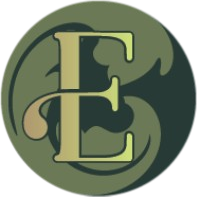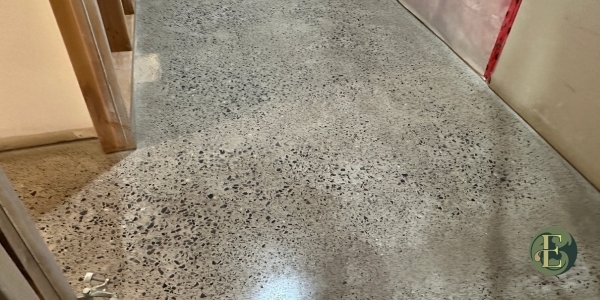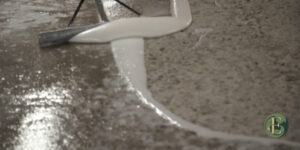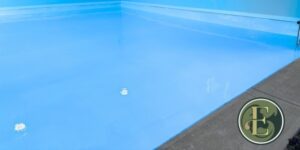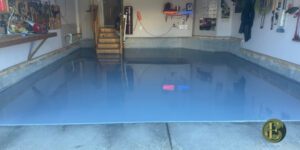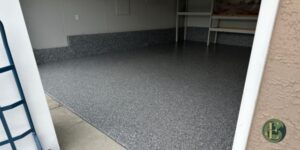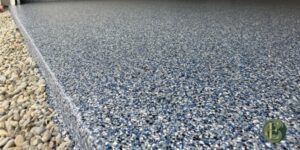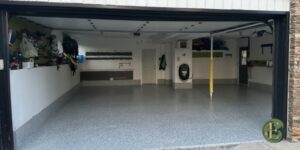You’re about to resurface your concrete floors with a slick, durable epoxy coating—industrial swagger meets penthouse polish. But let’s be honest: this isn’t paint-by-numbers. If you’re in Calgary and skip the prep, ignore the forecast, or eyeball your ratios, your dream floor could become a sticky, bubbly, peeling nightmare.
As epoxy flooring professionals who are knee-deep in epoxy fumes on the regular—from warehouses into garages—we’ll walk you through the most common epoxy floor resurfacing problems, why they happen, and how to dodge them like a pro.
Part 1: The Usual Suspects—What Goes Wrong (and Why)
1. Poor Surface Preparation
I’ve seen it too many times: a shop floor in the SE industrial sector gets a quick sweep, maybe a mop, and then epoxy is slapped on. A month later, the coating peels like cheap wallpaper. Why?
Epoxy resurfacing is a chemical marriage, not a fling. The bond is only as strong as the surface prep. Dust, grease, laitance (that weak, milky layer on fresh concrete), or even leftover cure-and-seal will sabotage adhesion.
Epoxy flooring’s abrasion resistance and flexural strength are significantly higher than those of ceramic tiles, with laboratory tests showing an average flexural strength of 52.24 N/mm² for epoxy compared to 40.82 N/mm² for ceramic, and a lower average wear rate (0.573 mm vs. 1.49 mm).
Pro tip: In Calgary’s dry, abrasive climate, a diamond grinder isn’t optional—it’s gospel. Mechanically profile the slab to at least CSP 3 (Concrete Surface Profile), patch cracks with epoxy mortar, and vacuum like your bond depends on it (because it does).
“But it looks clean!”
Looks are deceiving. A clean surface is oil-free, pH-neutral, and dry. If you’re resurfacing a garage, and the floor was sealed three owners ago, grind it off. No shortcuts.
2. Moisture Intrusion
Moisture’s the ninja of epoxy failures. Calgary’s freeze-thaw cycles turn slabs into sponges. If there’s vapor transmission or rising damp (check with a calcium chloride test—ASTM F1869), your epoxy will bubble, blister, and eventually debond. Fact: In a 2023 survey of Calgary industrial facilities, 38% of premature epoxy failures were traced to unmitigated substrate moisture.
Fix: Install a moisture barrier or use a moisture-tolerant epoxy system. Don’t cheap out—your floor’s lifespan is at stake.
3. Mixing Mishaps
Epoxy is a two-part dance: resin and hardener. Mix too fast? Air bubbles. Wrong ratios? Weak cure. I’ve watched DIYers in Airdrie eyeball the hardener, then wonder why their floor stays tacky. Pro move: Use a drill mixer at 300–600 RPM, scrape the sides and bottom, and mix for the full time specified (usually 3–5 minutes).
Bonus: Temperature matters. Epoxy hates Alberta’s mood swings. Too cold (below 10°C)? It’ll take days to cure, stay brittle, and crack. Too hot (above 30°C)? It’ll flash off, leaving pinholes and orange peel. Aim for 15–25°C ambient and slab temp.
4. Application Blunders: Thickness, Timing, and Tools
Too thin? Your floor wears through fast. Too thick? It’ll run, sag, or cure unevenly. Industry standard: For heavy-duty resurfacing in Calgary’s industrial parks, apply a minimum 10 mils (0.25 mm) per coat. Use a notched squeegee or spiked roller for even distribution.
And here’s a rookie mistake: applying the next coat before the previous one’s fully tack-free. That’s delamination city. Wait times: 12–24 hours between coats, depending on product and conditions.
5. Cure Time: Patience is a Virtue (and a Cost Saver)
Epoxy isn’t latex paint. Walk on it too soon, and you’ll leave footprints. Drive on it, and you’ll tear chunks out. Full cure: Up to 72 hours for 100% chemical resistance and hardness. (Compare that to polyurea, which cures in 24, but that’s another blog.)
Calgary reality check: In winter, add 50% to cure times. Rushing is the enemy—plan your resurfacing around weather and occupancy.
Pro Tips From the Field
- Ventilation: Epoxy fumes in a closed garage? Don’t. Use fans, open doors, and wear a respirator. Inadequate ventilation not only risks health but can cause amine blush—a greasy film that ruins adhesion.
- Humidity: Aim for 50–60% RH during application. Too high? Epoxy stays tacky. Too low? It cures too fast. Calgary’s average RH is 55% in summer, 40% in winter—watch the forecast.
- Dust control: Even in a “clean” shop, airborne dust settles on wet epoxy. Use an air scrubber or schedule resurfacing after hours.
- Product selection: Not all epoxies are equal. For heavy forklift traffic in SE industrial zones, specify a 100% solids, high-build epoxy with anti-slip aggregate. For a showroom in Mount Royal, consider a self-leveling metallic epoxy.
Avoiding Aesthetic Nightmares
- Bubbles and pinholes: Mix slowly, degass if needed, and don’t apply over porous concrete without a primer.
- Fish eyes: Contaminants (silicone, oil) repel epoxy. Clean with a dedicated concrete cleaner, not just water.
- Color inconsistency: Mix full batches. Don’t eyeball tints. And for the love of floors, don’t add water
Epoxy floor resurfacing in Calgary isn’t just a job—it’s a craft. Respect the chemistry, the climate, and the concrete. Do it right, and your floor will be a badge of pride. Cut corners, and, well, you’ve been warned.
Ready to resurface? Contact Elegant Coatings today for a consultation tailored to Calgary’s unique challenges—and get a floor that stands up to anything Alberta throws at it.
FAQs
- Can Epoxy Floor Resurfacing Be Done in Winter in Calgary?
Epoxy floor resurfacing products and installations are highly sensitive to temperature and humidity, which Calgary winters deliver in spades. At Elegant Coatings, we use specialized, cold-cure epoxy systems designed for Alberta’s climate, ensuring proper adhesion and finish—even when it’s -10°C outside. You’ll get a durable, glossy floor year-round, not just when the sun’s shining.
- What’s the Lifespan of an Epoxy-Resurfaced Floor in a Heavy-Traffic Industrial Setting?
In demanding environments like Calgary’s industrial parks, a properly installed, high-build epoxy resurfacing system can handle forklifts, pallet jacks, and chemical spills for 10–15 years with minimal maintenance. That’s a decade-plus of impact resistance, chemical protection, and easy cleaning—far outperforming bare concrete or thin coatings.
- How Do You Ensure Even Color Distribution in Large Epoxy Resurfacing Projects?
Achieving uniform color in expansive spaces takes pro-grade tools, precise mixing, and application techniques that account for Calgary’s dry, variable conditions. Elegant Coatings uses industrial-grade mixers, trained crews, and batch control to prevent streaking or blotching—delivering flawless, commercial-grade results for showrooms, warehouses, and retail spaces.
- Can Elegant Coatings Customize Epoxy Floor Resurfacing for Unique Design Needs?
Absolutely—whether you want slip-resistant textures, customized colors, or even logos embedded in your epoxy floor resurfacing, we tailor every project to your vision. Our Calgary team consults on aesthetics, safety, and performance, then executes with precision, turning your floor into a statement piece for your business or home.
- Why Choose Elegant Coatings for Epoxy Floor Resurfacing in Calgary?
Elegant Coatings combines local expertise with industrial-grade products, ensuring your epoxy floor resurfacing stands up to Alberta’s toughest conditions. From meticulous surface prep to climate-adapted application and aftercare, we deliver floors that look stunning, last longer, and add real value to your property—backed by a commitment to quality you won’t find with DIY kits or cut-rate contractors.
People Also Ask
- How much disruption will epoxy floor resurfacing cause to my business?
Most commercial epoxy resurfacing projects are completed in 3–4 days, with light foot traffic possible after 24 hours and full use after 72 hours—minimizing downtime for Calgary businesses. Proper scheduling and phased work areas keep operations moving. - Are epoxy floors safe for food processing or healthcare facilities?
Yes, when specified correctly. Epoxy resurfacing systems rated for food-safe and healthcare environments resist bacteria, chemicals, and frequent sanitization—making them ideal for Calgary’s kitchens, labs, and clinics. - Can I apply epoxy resurfacing over existing tile or vinyl flooring?
Epoxy bonds best to concrete, but with expert prep (including mechanical profiling and priming), some tile and vinyl substrates can be successfully overlaid. Elegant Coatings assesses your existing floor and recommends the best approach for a lasting result. - What’s the difference between epoxy and polyaspartic coatings?
Epoxy offers superior durability and chemical resistance at a lower cost, while polyaspartic coatings cure faster and resist UV yellowing—ideal for sun-exposed areas. Many Calgary projects use a hybrid system for the best of both worlds.
- How do I maintain the shine on my new epoxy floor?
Regular sweeping and occasional mopping with pH-neutral cleaners keep your epoxy floor resurfacing looking like new. Avoid harsh chemicals or abrasive pads—Elegant Coatings provides a tailored maintenance guide with every installation.
